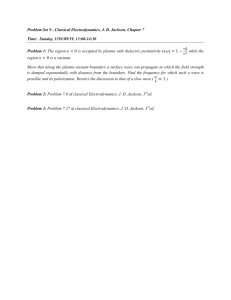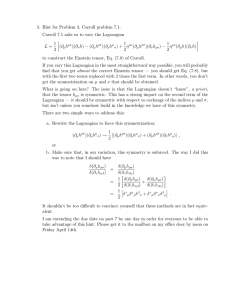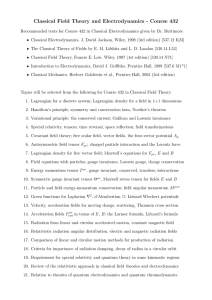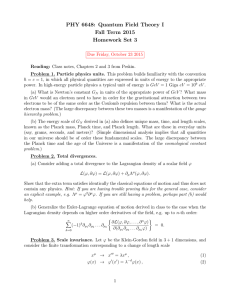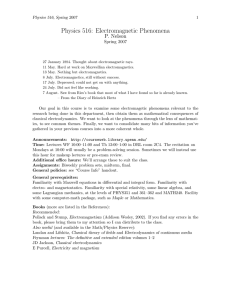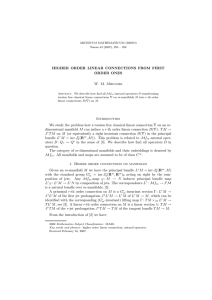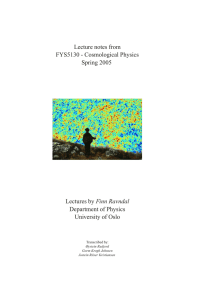STUDY WEEK EXERCISES FOR COURSE MA3431
advertisement
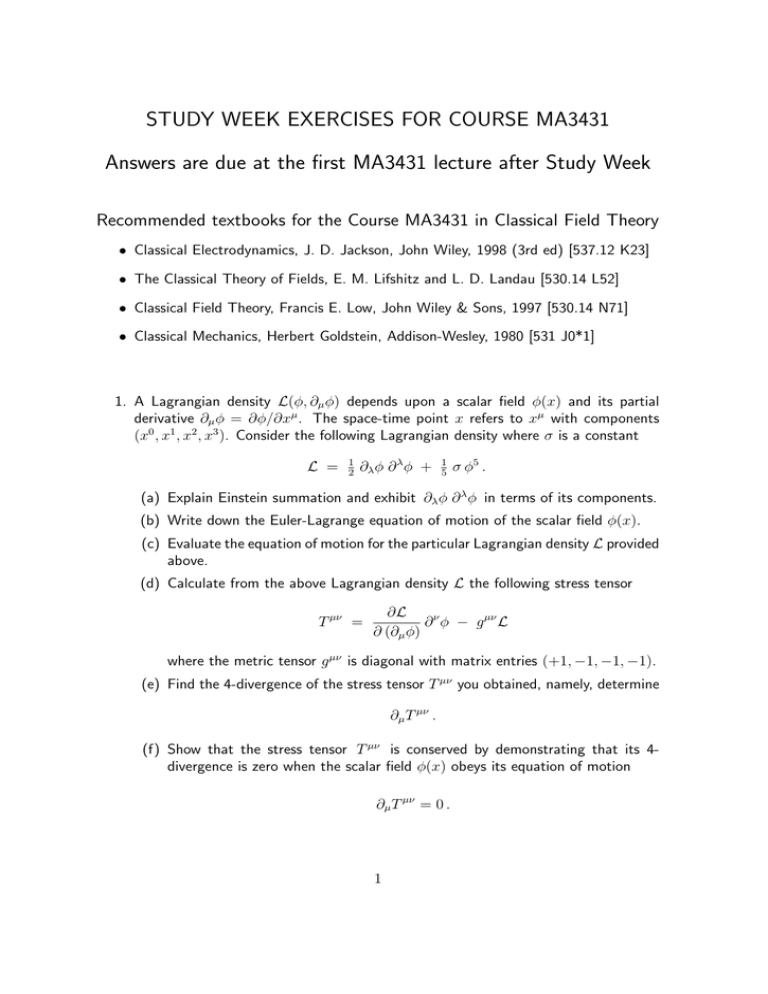
STUDY WEEK EXERCISES FOR COURSE MA3431 Answers are due at the first MA3431 lecture after Study Week Recommended textbooks for the Course MA3431 in Classical Field Theory • Classical Electrodynamics, J. D. Jackson, John Wiley, 1998 (3rd ed) [537.12 K23] • The Classical Theory of Fields, E. M. Lifshitz and L. D. Landau [530.14 L52] • Classical Field Theory, Francis E. Low, John Wiley & Sons, 1997 [530.14 N71] • Classical Mechanics, Herbert Goldstein, Addison-Wesley, 1980 [531 J0*1] 1. A Lagrangian density L(φ, ∂µ φ) depends upon a scalar field φ(x) and its partial derivative ∂µ φ = ∂φ/∂xµ . The space-time point x refers to xµ with components (x0 , x1 , x2 , x3 ). Consider the following Lagrangian density where σ is a constant L = 1 2 ∂λ φ ∂ λ φ + 1 5 σ φ5 . (a) Explain Einstein summation and exhibit ∂λ φ ∂ λ φ in terms of its components. (b) Write down the Euler-Lagrange equation of motion of the scalar field φ(x). (c) Evaluate the equation of motion for the particular Lagrangian density L provided above. (d) Calculate from the above Lagrangian density L the following stress tensor T µν = ∂L ∂ ν φ − g µν L ∂ (∂µ φ) where the metric tensor g µν is diagonal with matrix entries (+1, −1, −1, −1). (e) Find the 4-divergence of the stress tensor T µν you obtained, namely, determine ∂µ T µν . (f) Show that the stress tensor T µν is conserved by demonstrating that its 4divergence is zero when the scalar field φ(x) obeys its equation of motion ∂µ T µν = 0 . 1 2. (a) Show that the electric and magnetic induction fields transform according to E10 = E1 B10 = B1 E20 = γ E2 − γβ B3 B20 = γ B2 + γβ E3 E30 = γ E3 + γβ B2 B30 = γ B3 − γβ E2 namely, Eq. (11.148) of J. D. Jackson’s Classical Electrodynamics, using F 0 µν = Λµ ρ Λν σ F ρσ when the velocity βc of frame K 0 is directed along the x1 axis of frame K with Λµ ρ = γ −βγ −βγ γ 0 0 0 0 0 0 1 0 0 0 0 1 . Assume that the elements of the matrix Fµν may be written in terms of the ~ and B ~ in a form given by Eq. (11.137) of J. D. Jackson’s CED, viz. fields E F µν = −E 1 −E 2 −E 3 −B 3 0 E1 0 E2 B3 E 3 −B 2 0 B1 B2 −B 1 . 0 (b) Show that the electric and magnetic fields in frame K of the electrostatic field of a stationary charge q in a frame K 0 moving with velocity v = βc along the x1 axis of frame K are given by Eq. (11.152) of J. D. Jackson’s CED, 3e E1 = − E2 = E3 = (b2 γqvt + γ 2 v 2 t2 )3/2 B1 = 0 (b2 γqb + γ 2 v 2 t2 )3/2 B2 = 0 B3 = 0 (b2 βγqb + γ 2 v 2 t2 )3/2 t referring to the time since the origins of the frames K and K 0 overlapped and b being the closest distance of approach of the charge, assumed fixed on the x02 axis. J. D. Jackson uses ordinary Cartesian spatial components in Eq. (11.148) and in Eq. (11.152). Contravariant indices are used here. 2
